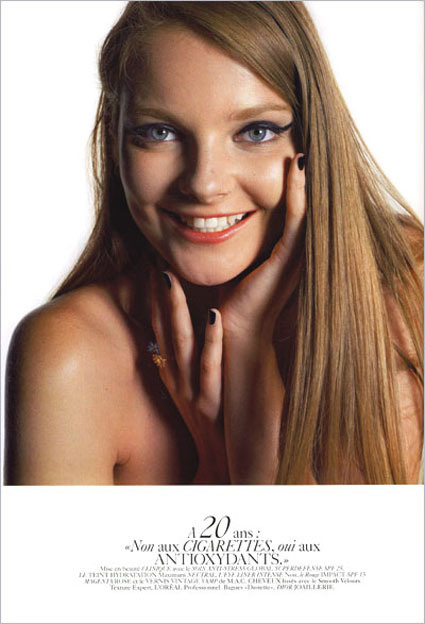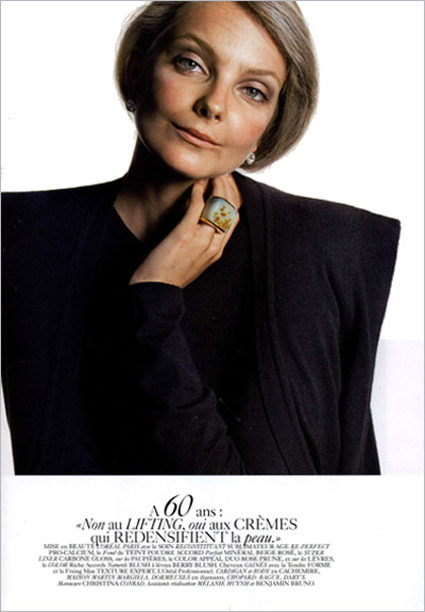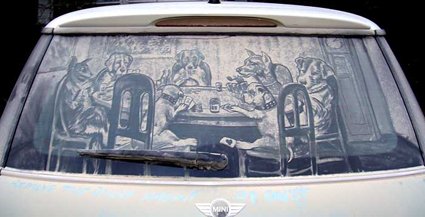Vogue Paris had a very interesting editorial featuring a series of photographs of the 20-years-old model Eniko Mihalik portrayed in the age of 10, 20, … 50, 60 respectively. It’s quite amazing how the overall look can be so malleable, achieved (perhaps not so) simply with tricks of the trade like hairdo, facial expression, make-up, photography angles, etc.

At 10, a certain wide-eyed innocence with a strong suggestion on bare-chestedness, half-exposed teeth (make them seem smaller and less full-grown), very light make-up, looking almost fresh out of a swimming pool or something.

At 20, a rather typical high-school/college girl first getting acquainted with mascara and lip-gloss; expressions of youth with straight hair, painted finger nails and fun accessories (ring); there is a sense of eagerness and anticipation in the expression.

At 30, she looks like she’s been through some really bad relationships, on the roads, and maybe have her life mortgated to drugs and alcohol, doused generally with a sense of cynicism towards the world.

At 40, life reins in as she matures and develops into a more assured woman; the wild sides has not been eliminated totally but tamed to a more nuanced portrayal;

At 50, back to a very classic and enduring look showing a sense of refined sophistication after living through the many decades; tastes have been distilled and generally looks more classy.

Finally at 60, the beauty grows inwards as the outer appearance are toned down in favor of more subtle expression (cropped hairdo, plain top), with a sense that the inner wisdom is now far more distinguishing than the outer appearance.
—
It’s really quite amazing that all these were achieved simply by modifying the external “packaging” on a person – that probably goes to show how precise the media can turn and distort “reality” by modifying how it is presented. Great works.
[via Miss at la Playa]









